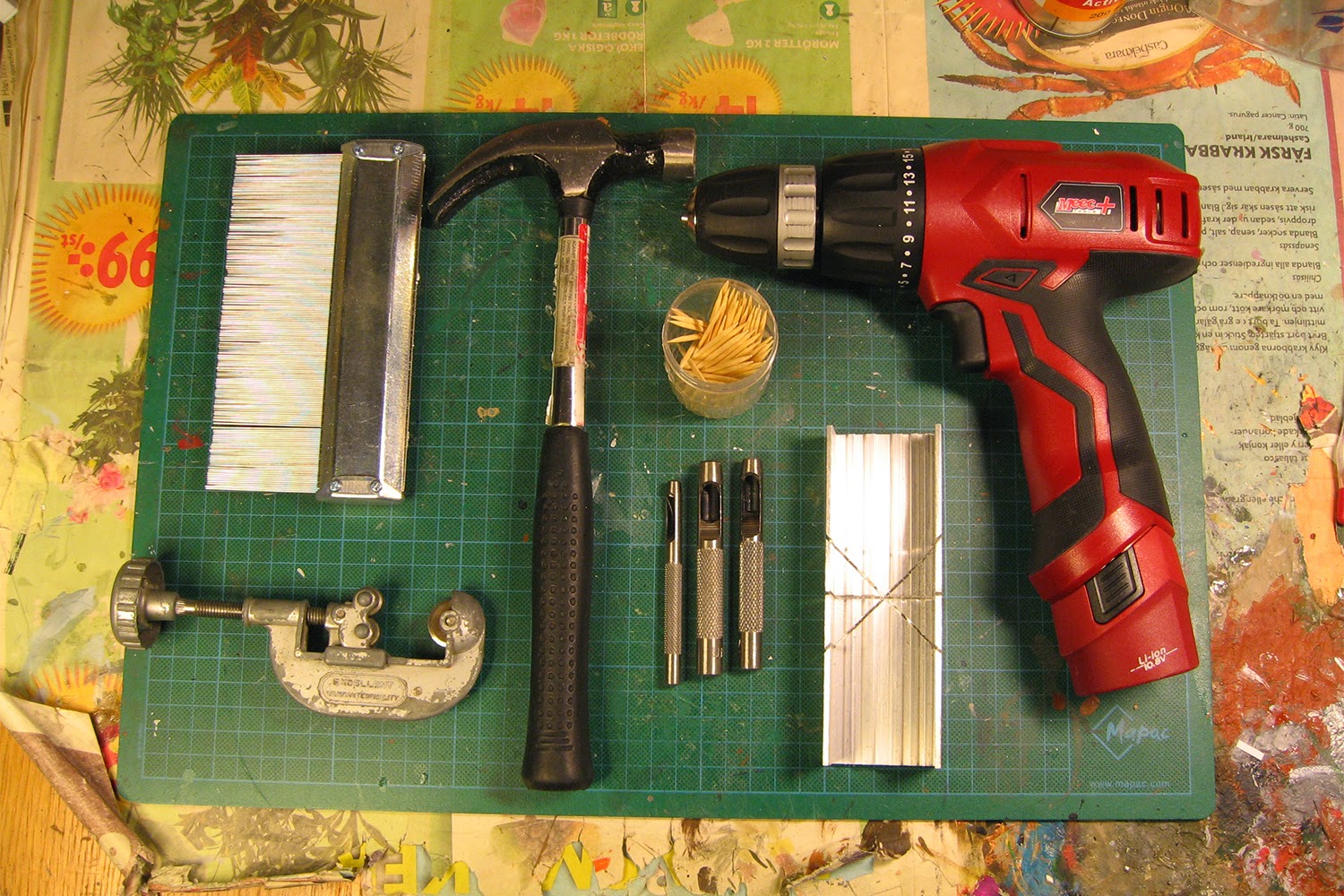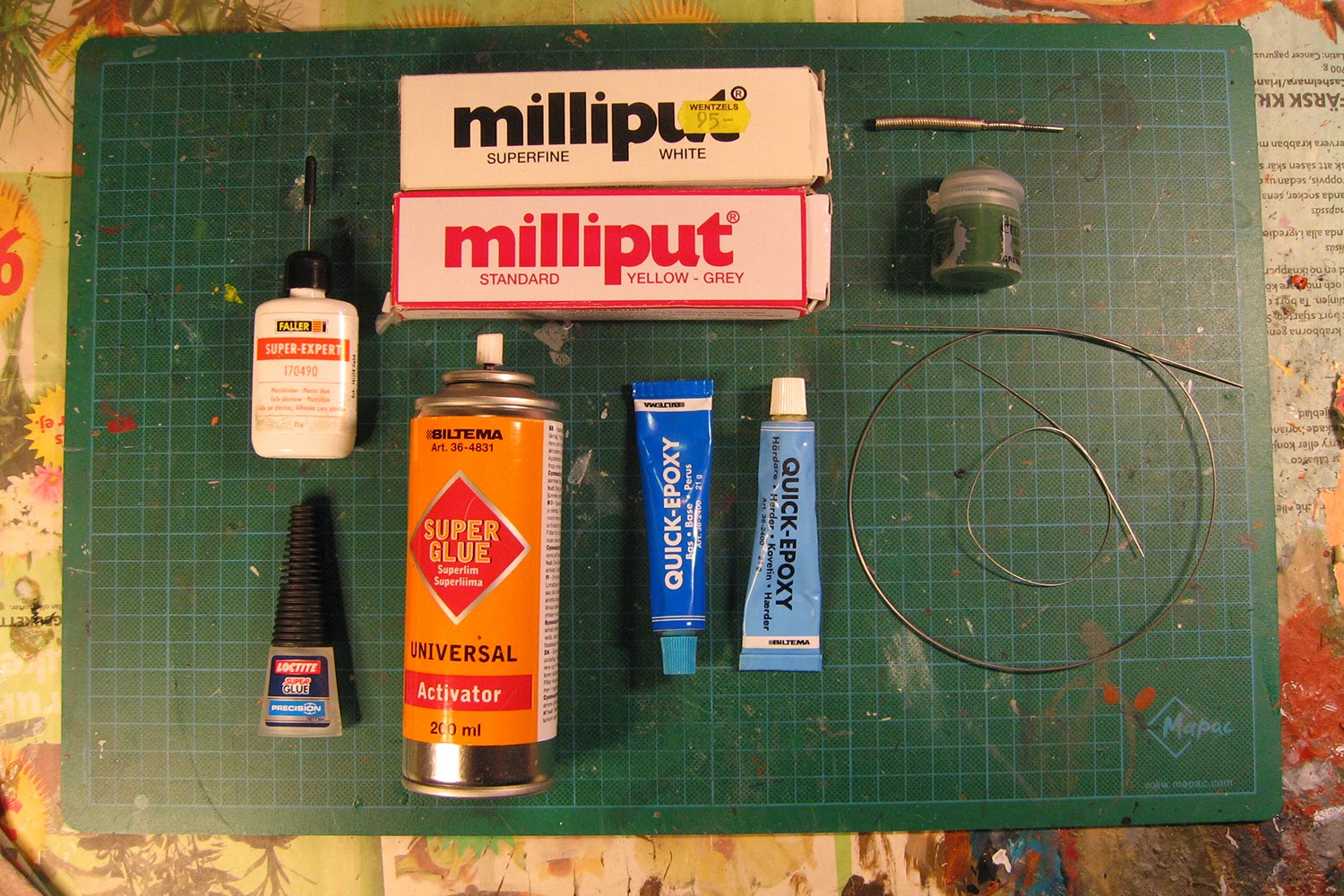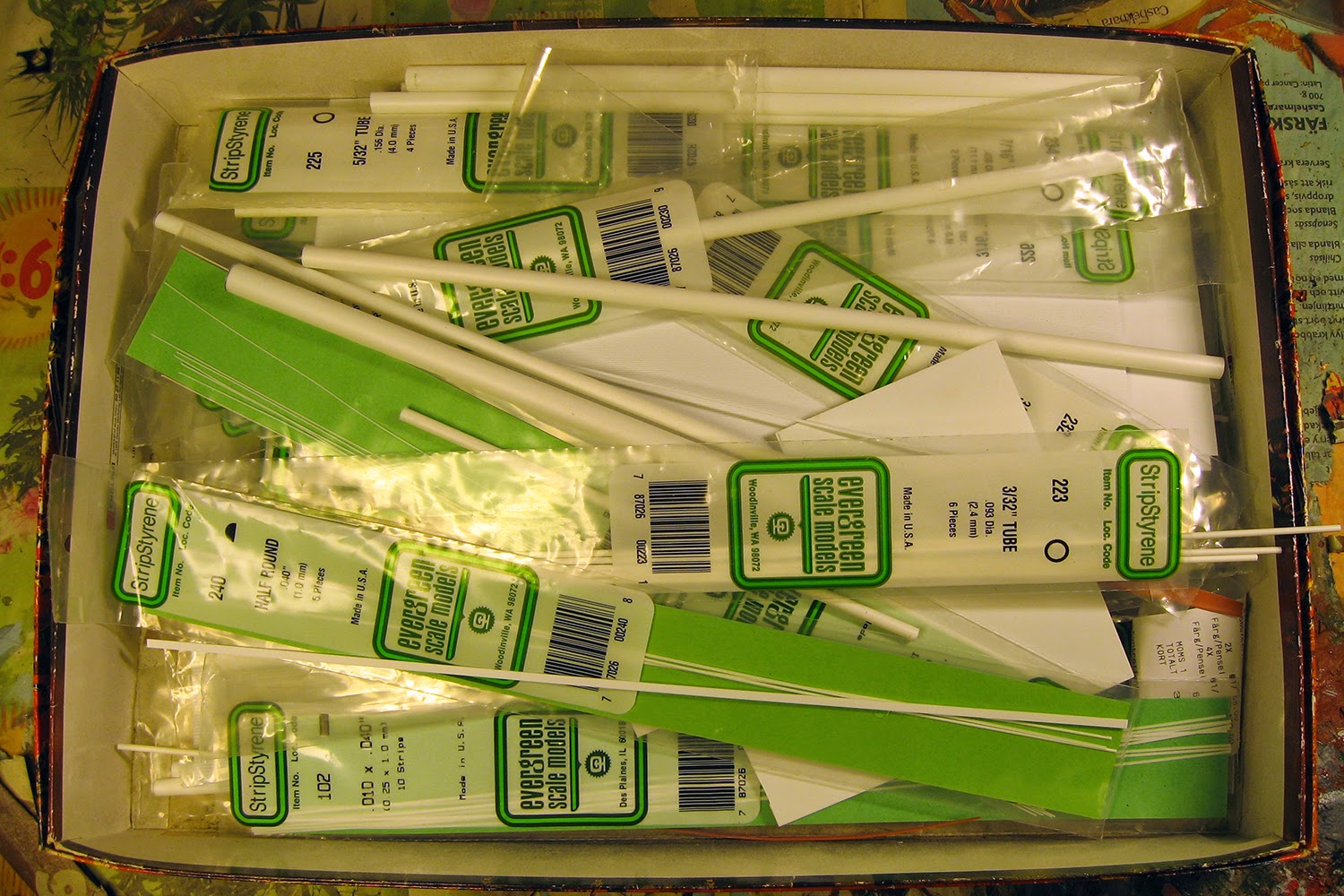So I've gotten it into my head that I should do a few articles on how to scratchbuild. Not perhaps the most in-depth series but it should be more than enough to give any beginners a decent boost. Here is the first part, the tools needed to actually build.
- Knives - You are going to need knives. I personally use cheap snap-off blade knifes and scalpels but I know there are LOTS of alternatives and it very much comes down to personal preference. In any case, this is not optional and any hobbyist worth anything should already have a collection of favourite cutting implements.
- Scribing tool - While perhaps slightly in the optional category, a good scribing tool will save you a lot of headaches, not to mention let you keep what little sanity you might have left. The one I'm using is from Tamiya but there are others that are equally useful.
- Files and abrasives - This is also very much needed and also very much up to the preference of the user. I have several needle files that comes in several different sizes, shapes and grits as well as some sanding blocks and sanding paper. I've also found that the multi-grit sanding sticks normally used for polishing nails are very good.
- Side cutters - I use two side cutters, one that is rather heavy duty and can easily cut piano wire and another that is often called a sprue cutter as it is flat on one side and can really get close to the part getting cut loose.
- Cutting mat - A self healing cutting mat is perhaps not necessary but it will save your worktable a lot of wear and tear.
- Pin vise and drills - This an absolute must! If you don't have a pin vise already go buy one, now! An assortment of drills in different sizes are also very helpful. I have two sets of drills, one which starts at 0.3mm with 0.05mm increments up to 1.6mm and another that goes from 1.5mm to 6.5mm.
- Razor saw - While almost any small saw will do, the fine teeth and thin blade of a razor saw is ideal for this kind of work.
- Plier - Highly optional but sometimes you just need that extra bit of leverage and any kind of pliers will give you that. Just make sure that the inside of the jaws are smooth so you don't end up with ugly marks on the plasticard.
- Measuring tools - A good steel ruler is the bare minimum of what you need. I also use a smaller aluminium ruler (though to be fair it is kind of crappy), a calliper and an angle ruler. The smaller a build is, the higher the precision needs to be.
- Profile tool - Highly optional but there have been situations where I truly wished I would have had one close at hand.
- Pipe cutter - Strangely enough not very useful for cutting plasticard tubes, but it is good for creating panel lines on a perfectly round surface. Still, not something that is used terribly often.
- Hammer and hole punch set - In the words of Jeremy Clarkson of Top Gear, 'Right, where's my hammers?' Seriously though, a hammer should only be used in conjunction with a hole punch set (or to demolish a particularly horrible failure). A compass/circle cutter might be a better choice.
- Toothpicks - Yes, toothpicks. Seriously, don't knock it until you try it. Toothpicks can be used as tools, building material, glue and paint applier, mixing sticks and any number of applications. Don't enter your hobby room without them.
- Mitre box - Optional but extremely useful. It's gotta be fairly small as a standard mitre box is just bloody gigantic for this kind of work.
- Power tools - The manliest part of your arsenal! A battery powered drill will help immensely when doing large scale drilling. Most pin vises can't even fit the larger drill bits so you kind of have to use a power drill for some situations. I also have a Dremel type rotary tool that can be used for all kinds of things, though to be fair it isn't always the best choice for plasticard. The high speed of a rotary tool has a tendency to melt the plastic rather than cut or grind it.
And there you have it, the tools I use for creating my scratchbuilds. I hope this series will helpful. Next time, chemicals and materials.







